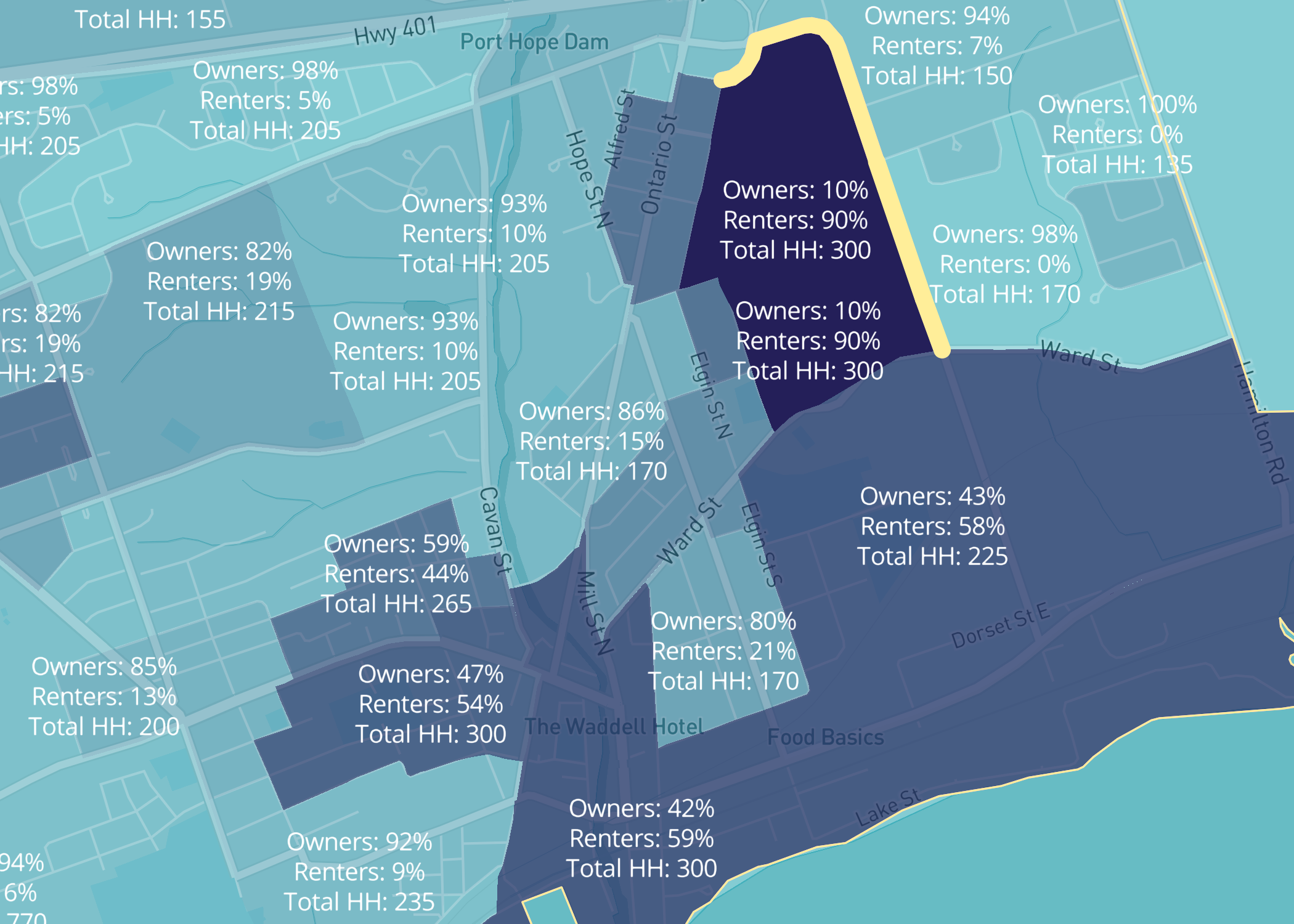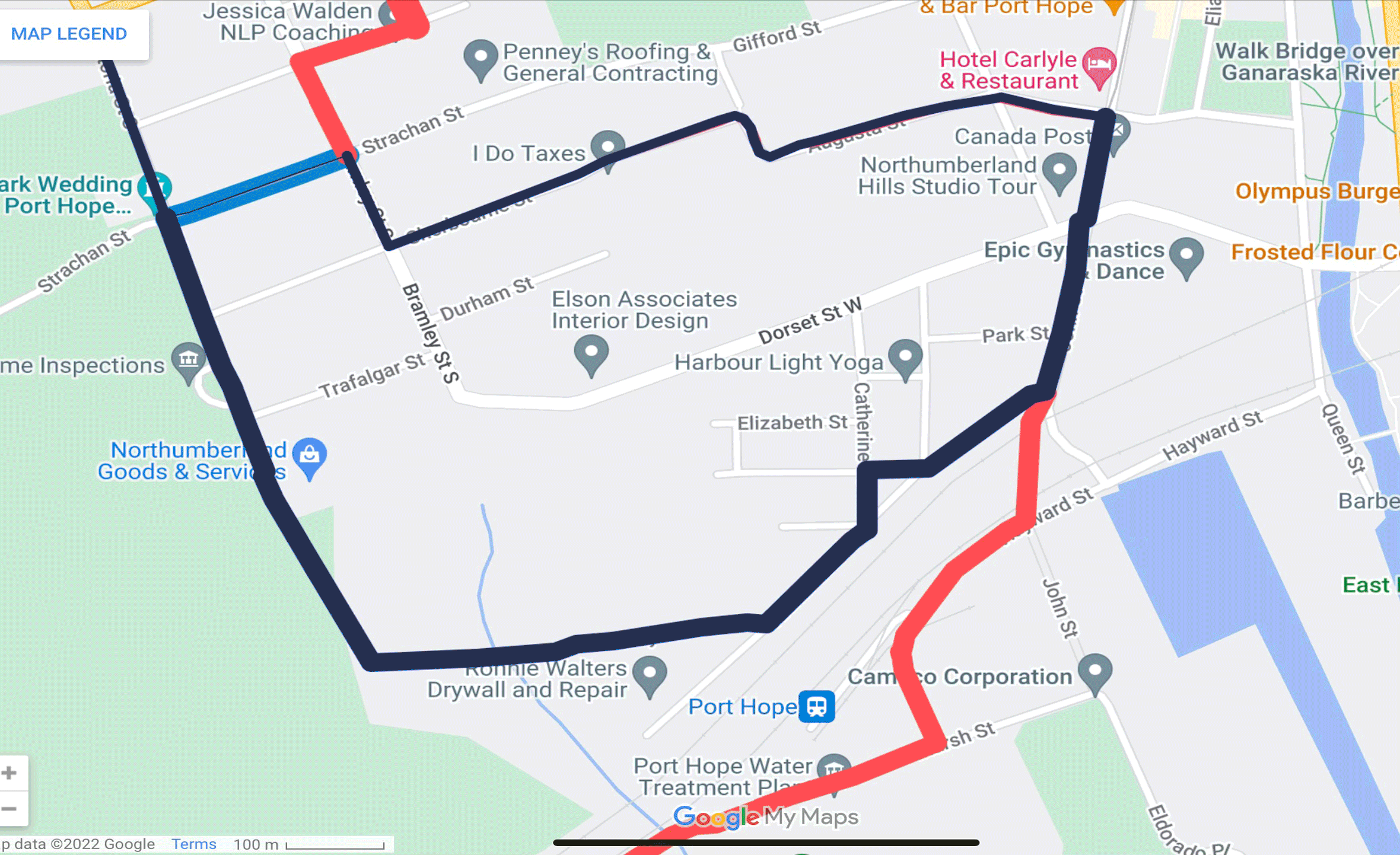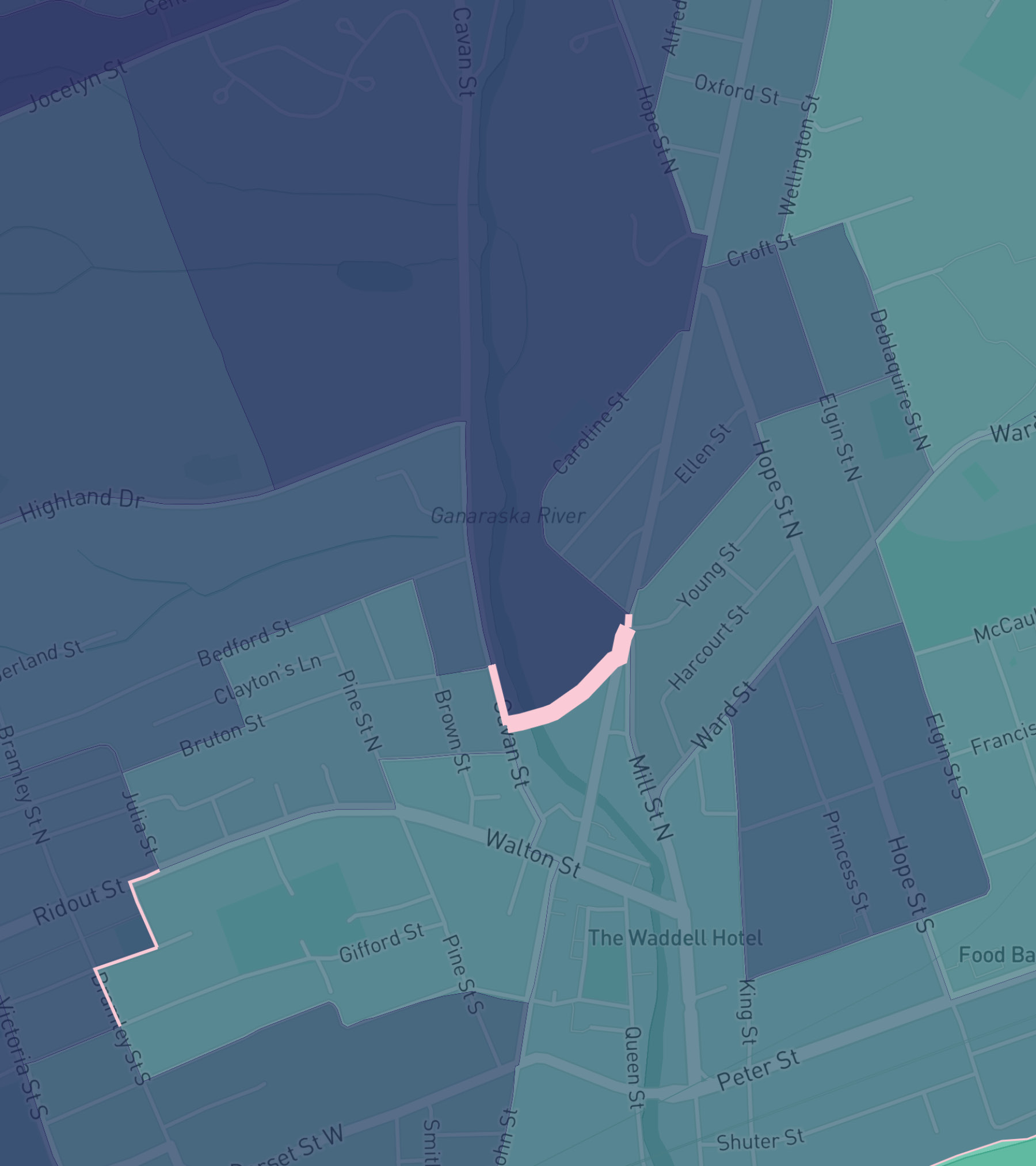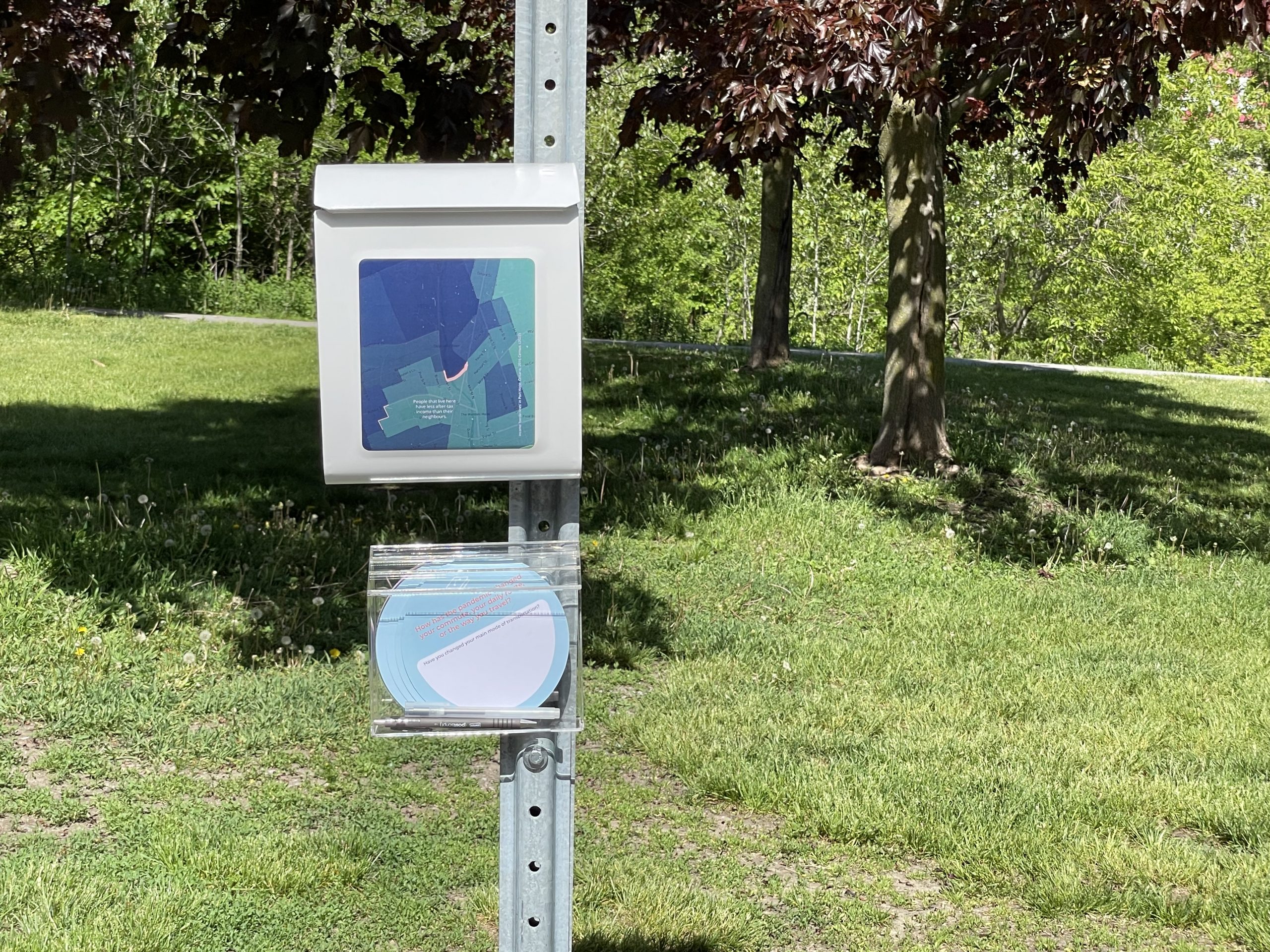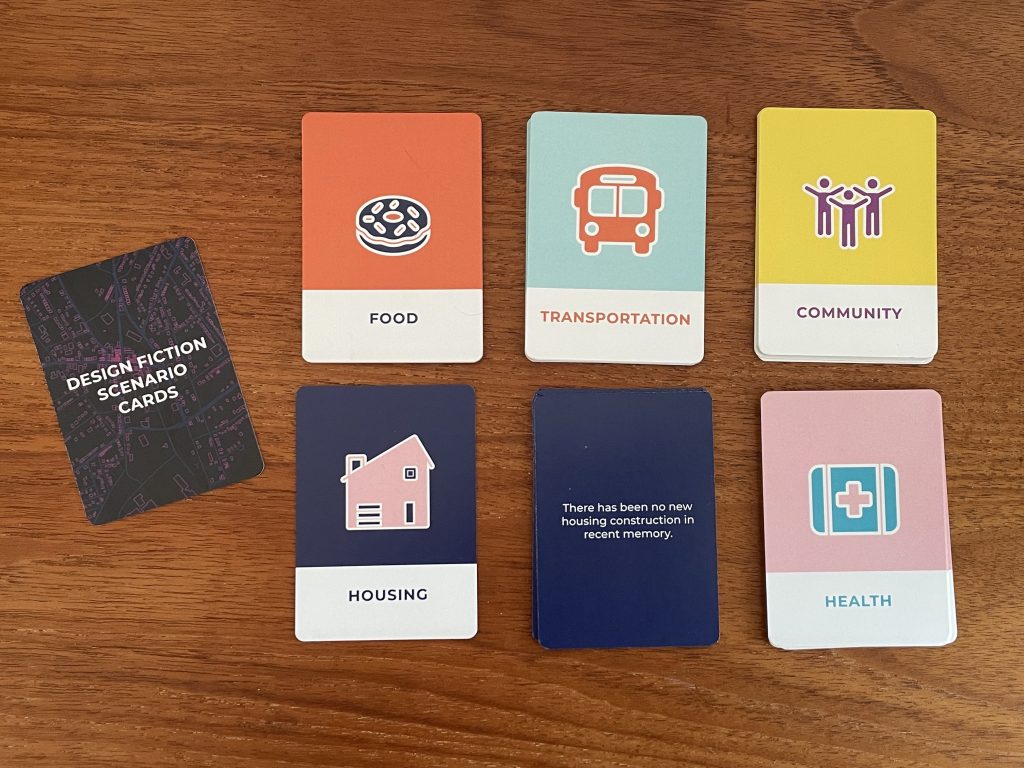Borderline Port Hope
From September 2021 – June 2022, we worked with Critical Mass Art to present Borderline in Port Hope, Ontario. Using income and demographic data from the 2016 Census, we developed a series of maps to identify borderlines in the community, led a soundwalk through the downtown core and facilitated a design fiction workshop to help imagine innovative, equitable futures for the community.
The project involved mapping the town using Census data, using differences between adjacent areas to identify borderlines, investigating the borderlines using Street view, driving and walking data lines, consulting with members of the community, and designing informal survey boxes along selected borderlines to learn how Port Hope has changed since the pandemic.

